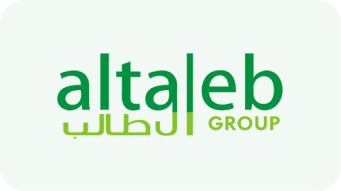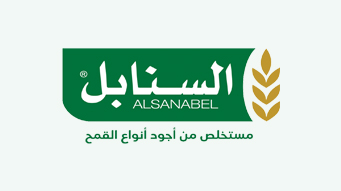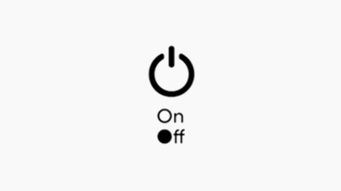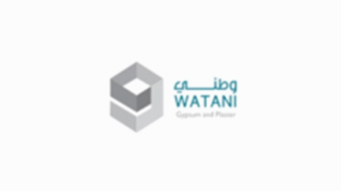
How to Reduce Emergency Maintenance Costs
Learn how to reduce emergency maintenance costs through proactive strategies, including root cause analysis, preventive maintenance, and asset management.
No facility manager enjoys dealing with emergency maintenance situations. When an emergency maintenance request arises, it could be an indication that the safety or value of the property is at risk. It also leads to increased labor costs, rescheduling, equipment downtime, possible overtime pay, and lost revenue.
Fortunately, maintenance emergencies are usually preventable. Regular maintenance and proper asset use can prevent most urgent and emergency maintenance situations.
What is Emergency Maintenance?
Emergency maintenance is a form of reactive maintenance that must be performed immediately due to the risk of failure to human safety or property damage. Emergency failures typically occur without warning. In most cases, the failure is caused by unexpected wear and tear, rather than anticipated deterioration.
Types of Emergency Maintenance
Equipment Failures
Equipment failure refers to the unexpected failure of any critical piece of equipment. This malfunction may result from an accident, misuse, natural disaster, or inadequate equipment maintenance. Reactive maintenance to repair a malfunction is considered an emergency if the equipment is required to maintain safety, maintain structural integrity, or perform essential business operations.
Infrastructure Failures
Infrastructure failures refer to any emergency maintenance situation related to a building’s infrastructure. Examples include a natural gas leak, a malfunctioning air conditioning unit, a clogged plumbing system, or a burst pipe. These situations are not considered emergencies unless they pose a serious risk to property or the safety of building occupants.
Safety Hazards
Any mechanical failure that poses a health and safety risk is considered an emergency maintenance situation. If the potential consequences are severe, even potential failures may warrant emergency maintenance. An example of this is a suspected gas leak.
Emergency Maintenance vs. Routine Maintenance
Emergency maintenance and routine maintenance are two different approaches to managing and maintaining assets and equipment within a facility. Routine maintenance is a form of non-emergency maintenance performed on a scheduled basis through your facility’s preventative maintenance program.
On the other hand, responding to any problem that requires immediate attention is considered emergency maintenance. Urgent maintenance requests that do not directly threaten health, safety, or property may not be considered emergencies.
How to Prevent and Respond to Maintenance Emergencies
Root Cause Analysis
By understanding the root causes of problems that lead to emergency maintenance costs, facility managers and maintenance teams can take specific actions to prevent similar problems from occurring. Performing a root cause analysis allows you to review and adjust maintenance strategies.
Common root causes of maintenance emergencies include:
- Lack of preventive maintenance
- Old equipment
- Lack of adequate training
- The need for better preventive maintenance scheduling
- Accidents
- Natural events, such as fires, floods, or heavy snowfall
- Misuse by an employee or building occupant who is not a member of the maintenance team
Conducting a Maintenance Audit
A maintenance audit involves a comprehensive evaluation of a facility’s maintenance practices, procedures, and records to identify areas for improvement. While conducting an audit after your team encounters an emergency maintenance issue is beneficial, conducting regular proactive audits can prevent these issues from arising.
Planning for Potential Emergencies
Planning for potential emergencies involves developing contingency plans and response strategies to handle emergencies that may arise. You can prioritize reactive and emergency maintenance workflows based on the urgency of the asset. Also, focus on the protocols necessary to keep your maintenance team safe while performing their work. For example, ensure that protective equipment is worn when necessary.
Define Emergency Maintenance Procedures
Emergency maintenance procedures provide clear instructions to maintenance teams on how to handle emergencies without compromising safety and ensuring an organized and coordinated response. These procedures will speed up the time required to complete emergency maintenance requests and maintain effective maintenance strategies.
Perform Preventive Maintenance
Performing preventive maintenance is perhaps the best way to mitigate emergency maintenance issues. Preventive maintenance involves regularly scheduled maintenance.
Routine maintenance tasks, inspections, and repairs prevent equipment failures or problems before they occur. Taking these precautions will significantly reduce the risk of pending problems that could lead to future emergencies.
Read more about The importance of preventative maintenance for your water treatment plant
Scheduling Periodic Maintenance Checkups
Permanent maintenance checkups involve setting up regular inspections and maintenance for all of your facility’s assets. You can perform checkups according to a set schedule or use predictive maintenance techniques to optimize your maintenance resources. In either case, checkups should be regular and ongoing.
Read also: The Importance of Maintenance Schedules for Treatment Plants
Emergency Procedure Training for Employees
Emergency procedure training for employees involves educating them on how to respond to maintenance emergencies safely and efficiently. This practice is critical to workplace safety and will help you get your assets back up and running faster.
Alternative Best Practices for Emergency Maintenance
The maintenance strategies mentioned above will fit your emergency maintenance program. However, each company has its own unique characteristics and emergency situations. Here are some alternative emergency maintenance strategies and effective practices that may benefit your facility.
Asset Management
Asset management involves systematically tracking, maintaining, and organizing your physical assets, including equipment, machinery, and infrastructure. Closely monitoring your assets will help you detect emergencies early and prevent them. For example, asset tracking may reveal that an asset is being stored at an improper temperature.
Replacement vs. Repair Strategies
A careful analysis of replacement vs. repair options enables facility managers to allocate resources efficiently. Choosing replacements when necessary can reduce the frequency of emergency maintenance work caused by unreliable or outdated equipment. This analysis has the added benefit of cost savings.
Building a Maintenance Culture
When employees at all levels of an organization embrace a maintenance-focused culture, they are more likely to care for their equipment. As a result, asset misuse is reduced, and they are more likely to report potential problems before they escalate into an emergency maintenance request.
Developing an Emergency Response Plan
An emergency response plan is a documented strategy that outlines how your team will respond to and manage emergencies, including maintenance emergencies. This plan prevents knee-jerk reactions that could cause more harm than good. It’s also a way to expedite emergency reactive maintenance when needed.
Establish Maintenance KPIs
You can gain valuable insights into asset performance by establishing and monitoring key performance indicators (KPIs). For example, you can use temperature as a KPI if an overheating signal indicates a potential failure. These insights will help you identify areas for improvement and make data-driven decisions. As a result, any future emergency maintenance issue will be handled more carefully based on the lessons learned.
The Importance of Reducing Emergency Maintenance
Emergencies can disrupt your operations, threaten health and safety, take your maintenance team out of regular work hours and scheduled work, and damage your equipment. Even with the correct emergency maintenance team procedures, these risks remain. Therefore, it’s essential to prevent emergencies whenever possible, which is one of the benefits of preventative maintenance. Preventive maintenance software tools make it easier to keep your program on track and prevent any maintenance-related emergency. This tool can enable you to automate your schedules, ensuring more accurate maintenance is performed when needed.


























